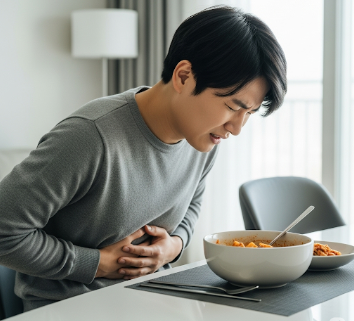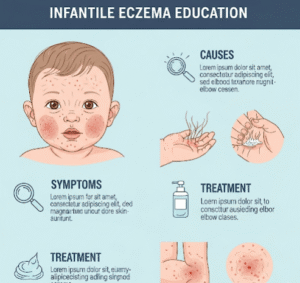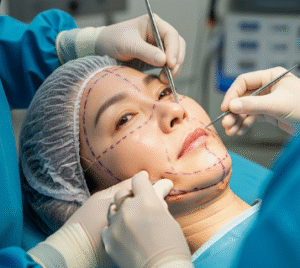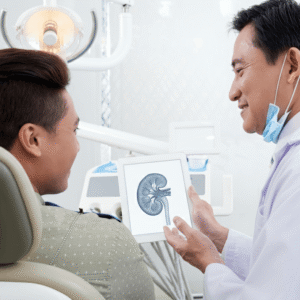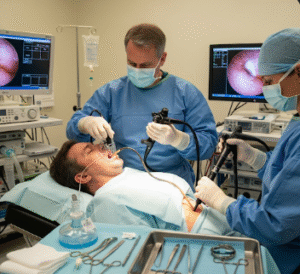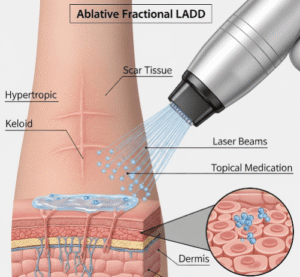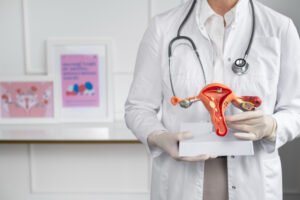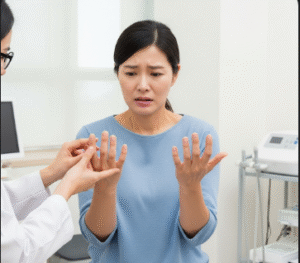Overview
Gut pain refers to discomfort, cramping, or aching in the abdominal area, often arising from the stomach, intestines, or other digestive organs. It is one of the most common symptoms people experience, ranging from mild indigestion to severe abdominal conditions.
Gut pain can be acute (short-term) or chronic (lasting weeks or months). Causes vary widely, including functional disorders like irritable bowel syndrome (IBS), infections, inflammatory conditions, obstruction, or organ-specific problems such as gastritis, appendicitis, or gallbladder disease.
In South Korea, advanced gastroenterology centers, diagnostic imaging, and specialized treatment options allow precise identification of gut pain causes and effective therapy tailored to each patient.
Key Facts
➲ Gut pain can arise from stomach, small intestine, large intestine, liver, pancreas, or gallbladder disorders.
➲ Pain may be crampy, dull, sharp, or burning, depending on the underlying cause.
➲ Symptoms may be accompanied by bloating, nausea, vomiting, diarrhea, constipation, or fever.
➲ Chronic gut pain may indicate IBS, inflammatory bowel disease, or functional dyspepsia.
➲ Severe acute pain may indicate surgical emergencies, such as appendicitis or bowel obstruction.
➲ Korea offers high-end diagnostics, minimally invasive procedures, and expert gastroenterology care.
What is Gut Pain?
Gut pain is a broad term for discomfort or ache originating in the abdominal region, typically caused by digestive system disturbances.
It can be localized (e.g., right lower quadrant in appendicitis) or diffuse (e.g., gas, bloating, or IBS). The intensity can range from mild discomfort to severe, debilitating pain. Gut pain is often accompanied by other gastrointestinal symptoms, including changes in bowel habits, nausea, vomiting, or bloating.
What Symptoms Are Related to Gut Pain?
Symptoms associated with gut pain depend on the underlying condition:
➲ Cramping or sharp abdominal pain.
➲ Bloating and gas accumulation.
➲ Diarrhea, constipation, or alternating bowel habits.
➲ Nausea and vomiting.
➲ Loss of appetite or early satiety.
➲ Fever if infection or inflammation is present.
➲ Visible swelling or abdominal distension.
➲ Pain may worsen after eating or at night.
What Causes / Possible Causes
Gut pain can arise from multiple organ systems and conditions:
1. Gastrointestinal Causes
➲ Irritable bowel syndrome (IBS) – functional bowel disorder causing cramping and changes in bowel habits.
➲ Gastroenteritis – infection by bacteria, viruses, or parasites causing acute gut pain.
➲ Inflammatory bowel disease (Crohn’s disease, ulcerative colitis).
➲ Gastritis or peptic ulcers.
➲ Constipation or fecal impaction.
➲ Bowel obstruction or volvulus (twisting of intestines).
2. Hepatobiliary Causes
➲ Gallstones or gallbladder inflammation (cholecystitis).
➲ Liver diseases like hepatitis or cirrhosis.
➲ Pancreatitis causing upper abdominal pain radiating to the back.
3. Urinary Causes
➲ Kidney stones producing lower abdominal or flank pain.
➲ Urinary tract infections causing referred abdominal discomfort.
4. Reproductive System Causes
➲ Men: testicular torsion or prostate-related pain referred to the gut.
➲ Women: ovarian cysts, ectopic pregnancy, endometriosis causing lower abdominal pain.
5. Other Causes
➲ Food intolerances or allergies (lactose, gluten).
➲ Medication-induced gut irritation.
➲ Stress-related functional gut pain.
When Should I See My Doctor?
Medical evaluation is essential if gut pain is severe, persistent, or associated with alarming symptoms:
➲ Pain is sudden, severe, or worsening.
➲ Accompanied by vomiting, diarrhea, or blood in stool/vomit.
➲ Unexplained weight loss or persistent loss of appetite.
➲ Fever or signs of infection.
➲ Persistent bloating, constipation, or diarrhea lasting more than a few weeks.
➲ Pain localized to the right lower quadrant, upper right quadrant, or upper abdomen with tenderness.
Early medical attention prevents complications such as intestinal obstruction, perforation, or severe infections.
Care and Treatment
Treatment depends on the underlying cause of gut pain:
1. Lifestyle and Dietary Measures
➲ Avoid trigger foods (spicy, fatty, or processed foods).
➲ Maintain hydration and balanced nutrition.
➲ Eat smaller, frequent meals.
➲ Manage stress through mindfulness, yoga, or counseling.
2. Medications
➲ Antispasmodics to relieve cramping.
➲ Proton pump inhibitors or antacids for acid-related gut pain.
➲ Antibiotics for bacterial infections.
➲ Anti-inflammatory drugs for IBD or pancreatitis.
➲ Laxatives or stool softeners for constipation-related pain.
3. Medical Procedures and Surgery
➲ Endoscopic evaluation for ulcers, polyps, or inflammatory conditions.
➲ Laparoscopic or open surgery for bowel obstruction, appendicitis, gallstones, or severe IBD complications.
➲ Drainage of abscesses or cysts.
4. Rehabilitation and Support
➲ Nutritional counseling for diet modification.
➲ Long-term monitoring for chronic conditions like IBS or IBD.
➲ Physical therapy for abdominal and core strength in post-surgical recovery.
Treatment Options in Korea
South Korea is known for world-class gastroenterology and minimally invasive surgery for gut disorders.
Diagnosis in Korea
➲ High-resolution endoscopy and colonoscopy for visual evaluation.
➲ CT scans, MRI, and ultrasound for precise organ assessment.
➲ Blood and stool tests for infection, inflammation, and organ function.
➲ pH monitoring and motility studies for functional gut disorders.
Medical Treatments in Korea
➲ Customized medication regimens for acid reflux, IBD, or infections.
➲ Advanced biologic therapy for Crohn’s disease and ulcerative colitis.
➲ Nutritional therapy and lifestyle counseling for chronic gut pain.
Surgical and Advanced Therapies
➲ Laparoscopic surgery for appendectomy, cholecystectomy, or bowel resections.
➲ Robotic-assisted surgery for precision and faster recovery.
➲ Endoscopic polyp removal or stricture dilation for esophageal or intestinal conditions.
Rehabilitation and Support
➲ Diet and lifestyle programs to prevent recurrence of gut pain.
➲ Follow-up monitoring with digital health platforms.
➲ Multidisciplinary care combining gastroenterology, nutrition, and rehabilitation.
Quick Highlights Box
➲ Gut pain can arise from stomach, intestines, liver, pancreas, urinary, or reproductive organs.
➲ Symptoms include cramping, bloating, diarrhea, constipation, nausea, and vomiting.
➲ Causes range from functional disorders, infections, inflammation, obstruction, to organ-specific diseases.
➲ Persistent or severe pain requires medical evaluation to prevent complications.
➲ Korea provides advanced diagnostics, minimally invasive surgery, and specialized gastroenterology care.
➲ Treatment includes lifestyle modifications, medications, surgery, and rehabilitation programs.

